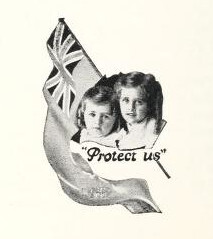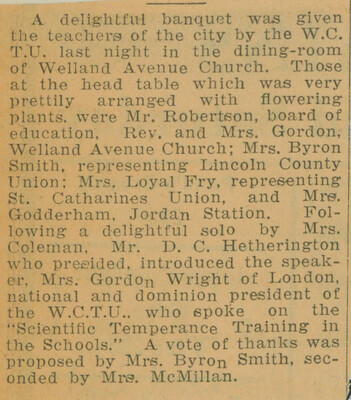Teaching the Children
The Scientific Temperance department of the WCTU focused their efforts on embedding temperance education into the Ontario curriculum and as early as the 1880s, they were petitioning legislation. By 1884, there was an agreement to include temperance education in the curriculum once a week and include an examination in a small group of schools. The movement for temperance education was not always a forward trajectory, there were times when it was abandoned by the Education Minister to accommodate other aspects of health education (hygiene, agriculture etc.). The WCTU concentrated a great deal of effort and finances to inform the educators about the significance of temperance education. When ministers refused to listen, they would approach the teacher associations themselves and even included speakers like Mary Hunt, International Superintendent of Scientific Temperance for the United States. The WCTU in Canada was competing with the already accepted temperance education in most American states and Hunt became an inspiration to the women as they forged ahead. Despite their hard work, the WCTU was unable to persuade educators and the legislature to support temperance textbooks in the classroom long term and accepted that some of their literature would only be available via school libraries.
While the battle to legislate temperance education in the public schools continued, the WCTU initiated their own work in the community to educate the youth. The Union believed that if they could inform the youth of the perils associated with alcohol and cigarettes, the future would include a community in support of temperance. The women worked with individual schools and small counties to create contests that involved multiple age groups. The contests included essay writing and posters with the theme of temperance. The youth were also heavily involved in the WCTU as part of sub-committees like the Little White Ribboners (symbol of temperance) and the Young Woman's Christian Temperance Union. Despite the incredible efforts of all groups, the temperance cause could not gain the traction it required to stay relevant in the school boards.
"We have not done all we might, but the opportunities of the Schools as compared to those of the Temperance organizations are as a ten thousand power electric light to a candle. We never ceased to do our little bit, and as citizens we tried to make sure that all the children would be fortified in the schools against an evil legally permitted by the Government, and from which it reaped so large a share of its revenue". S. G. E. Mckee, 192?






